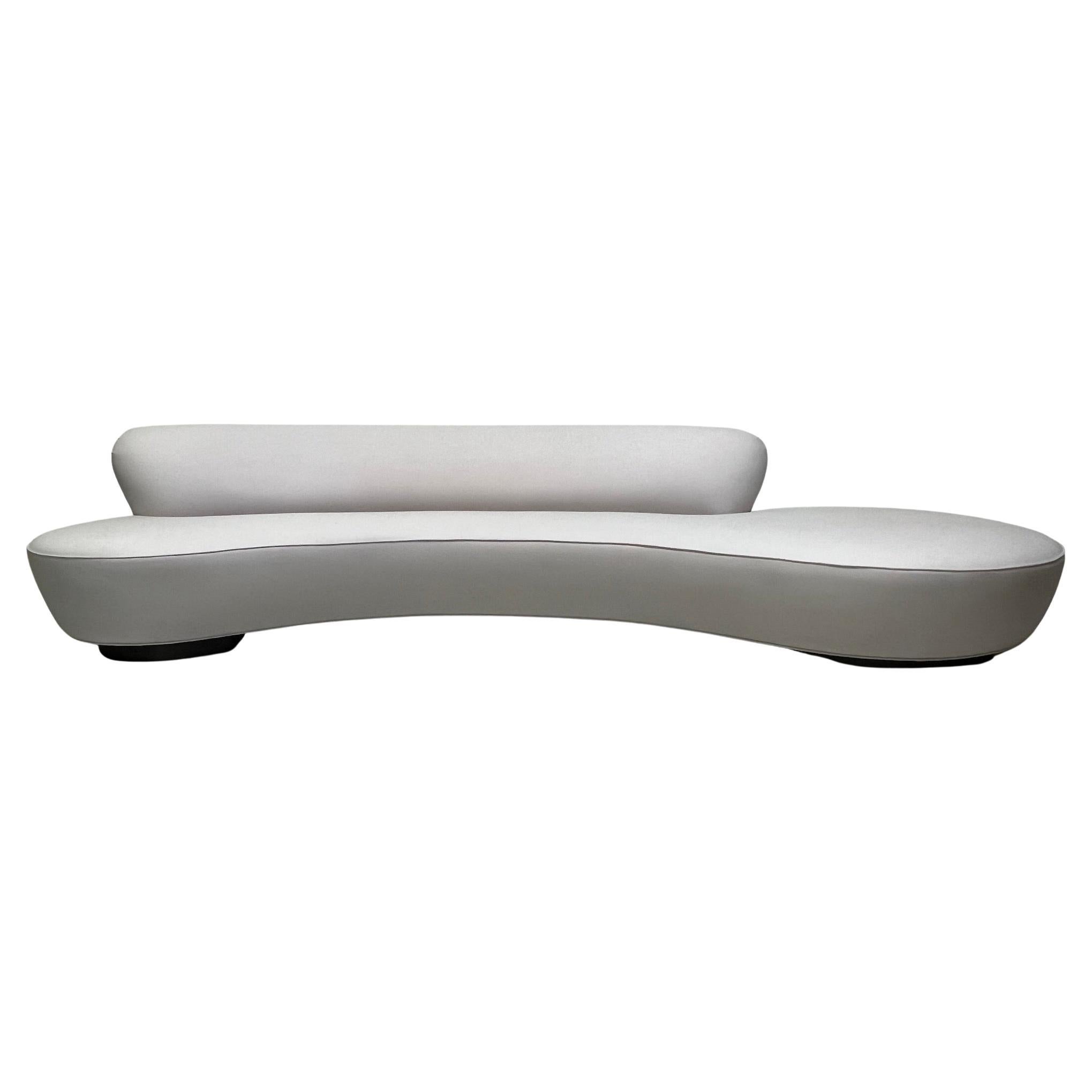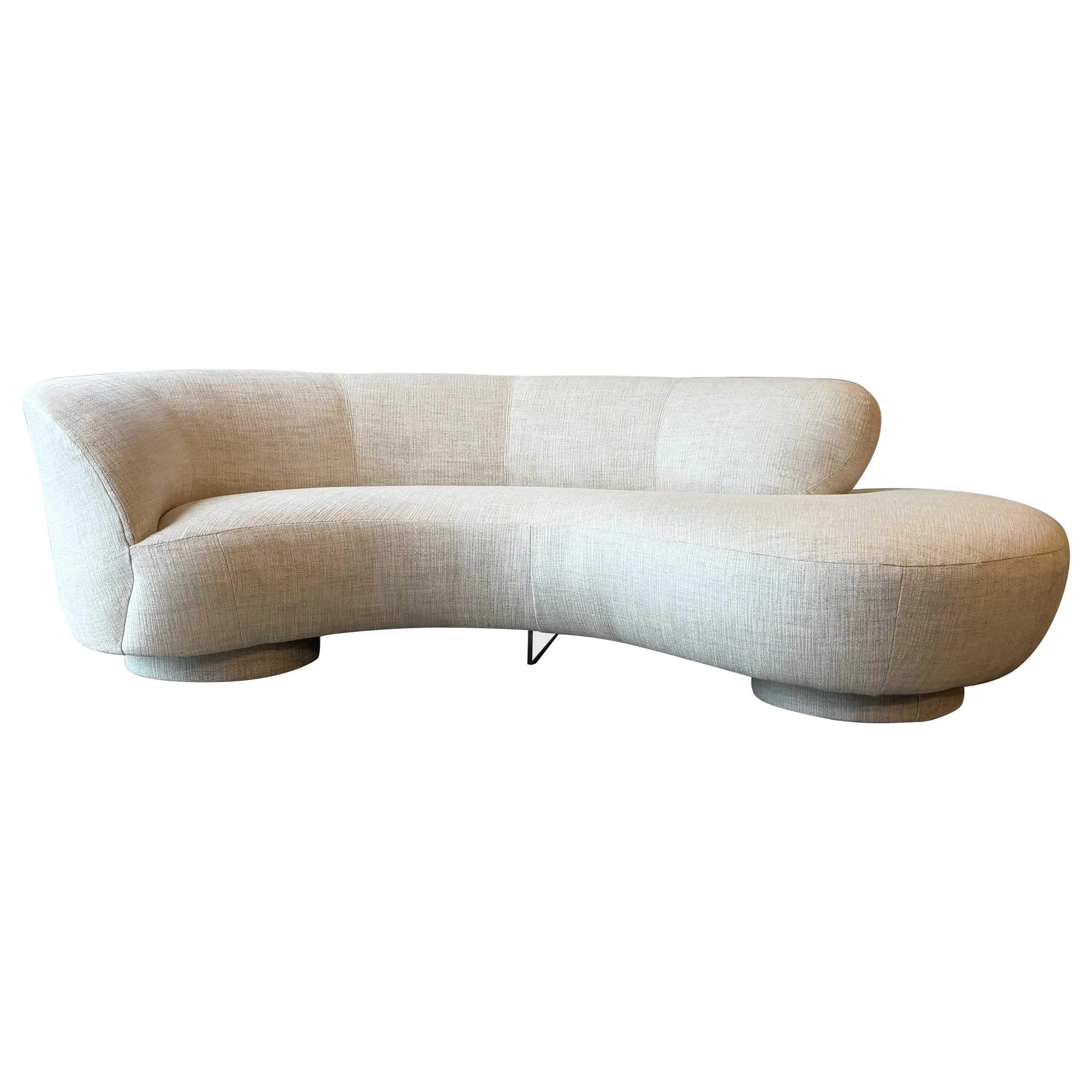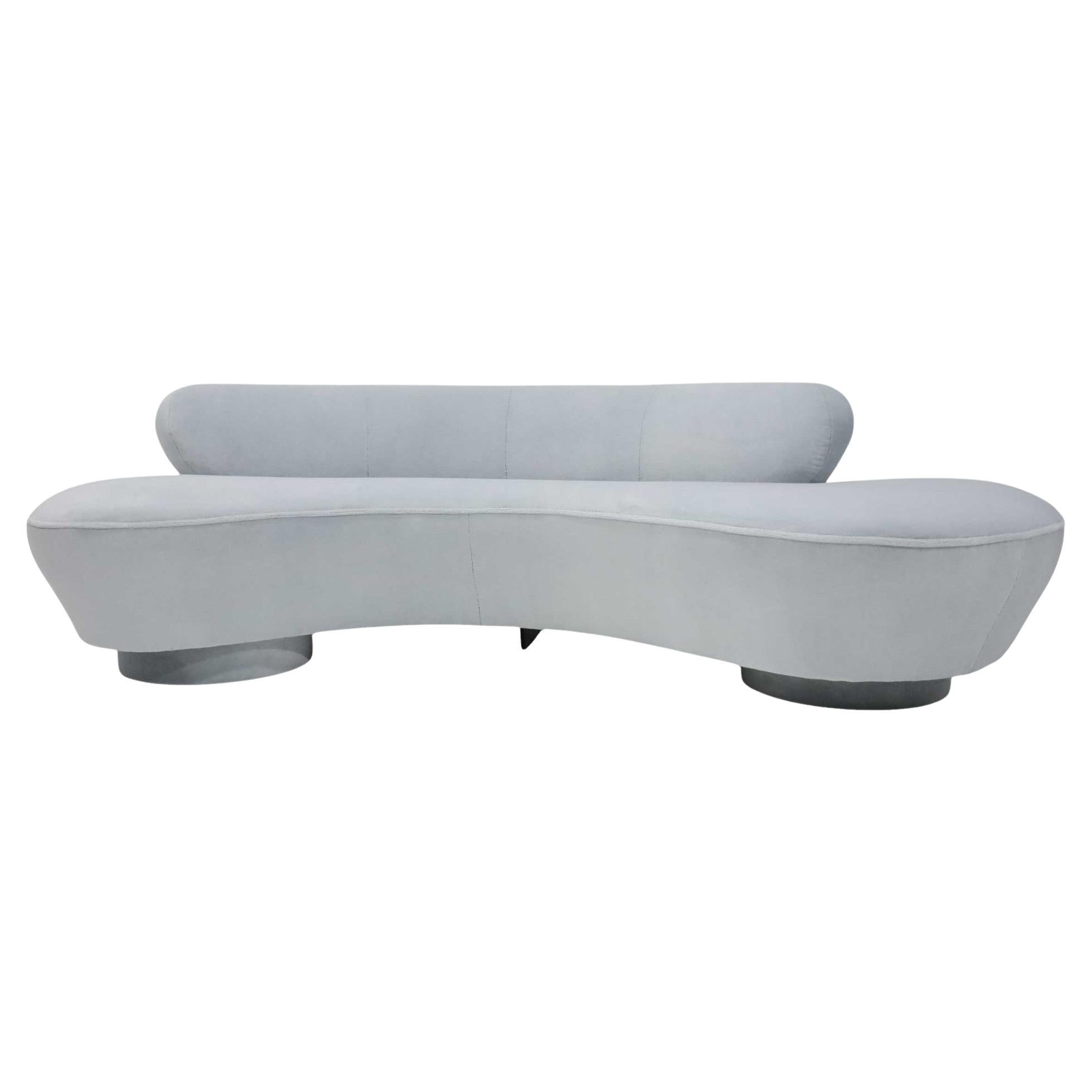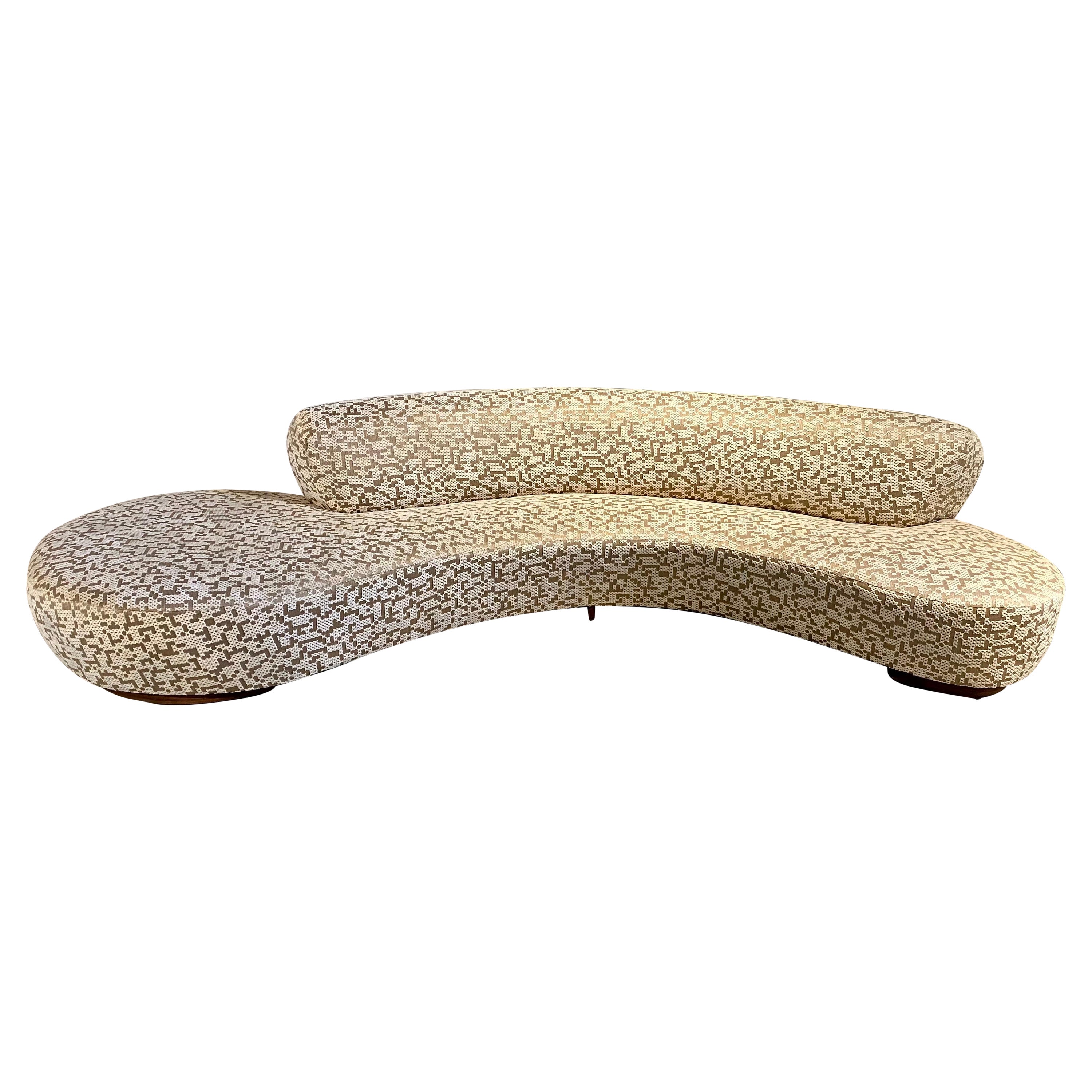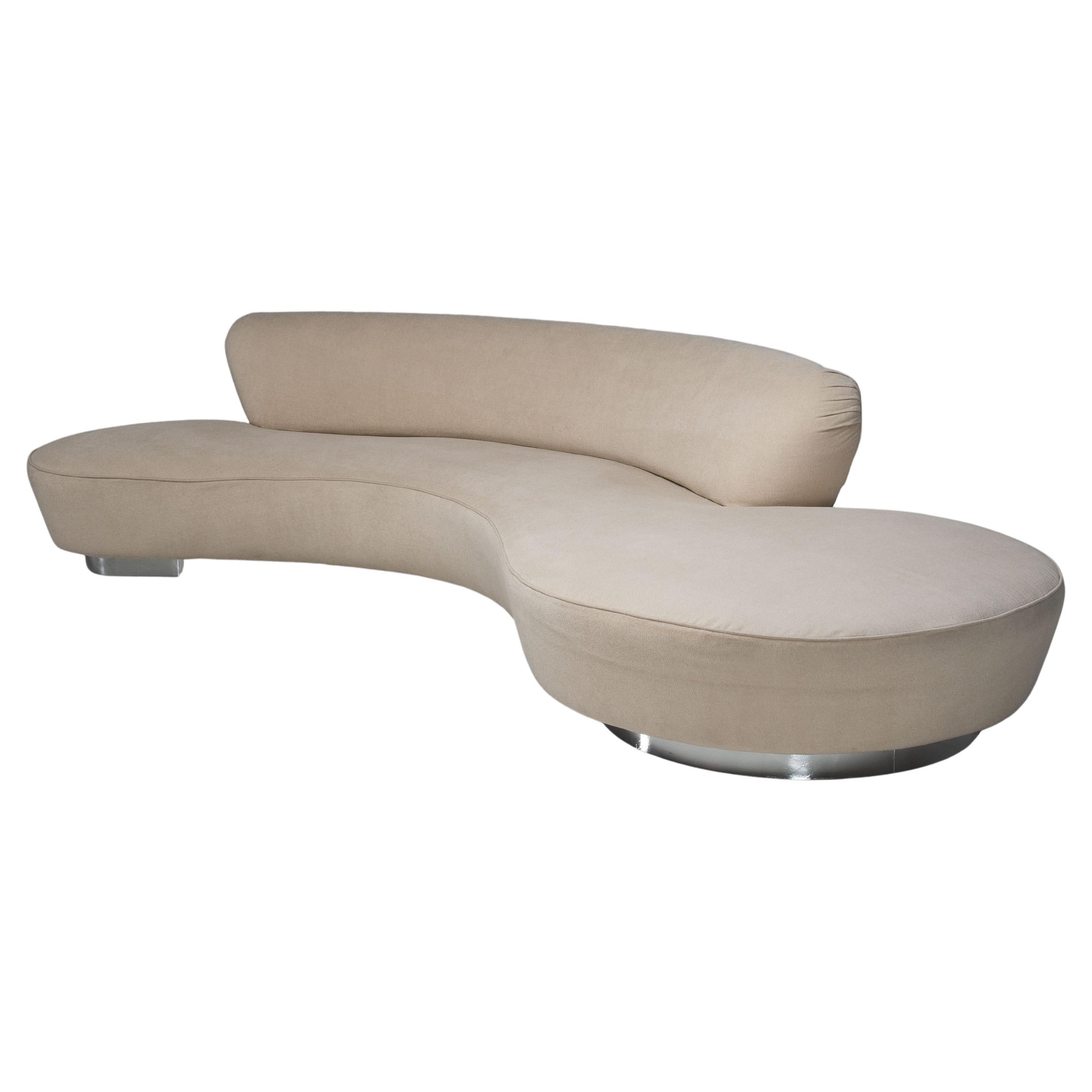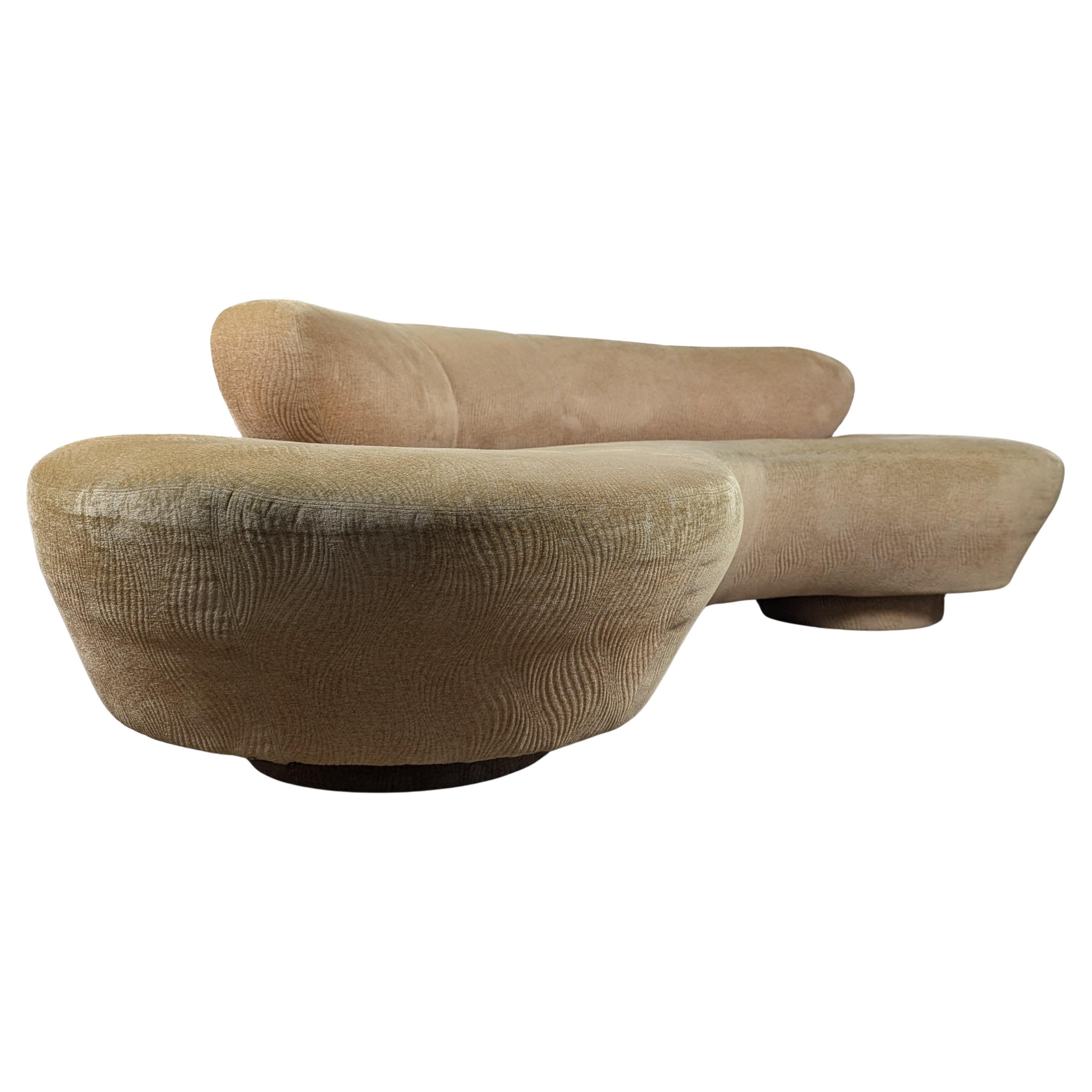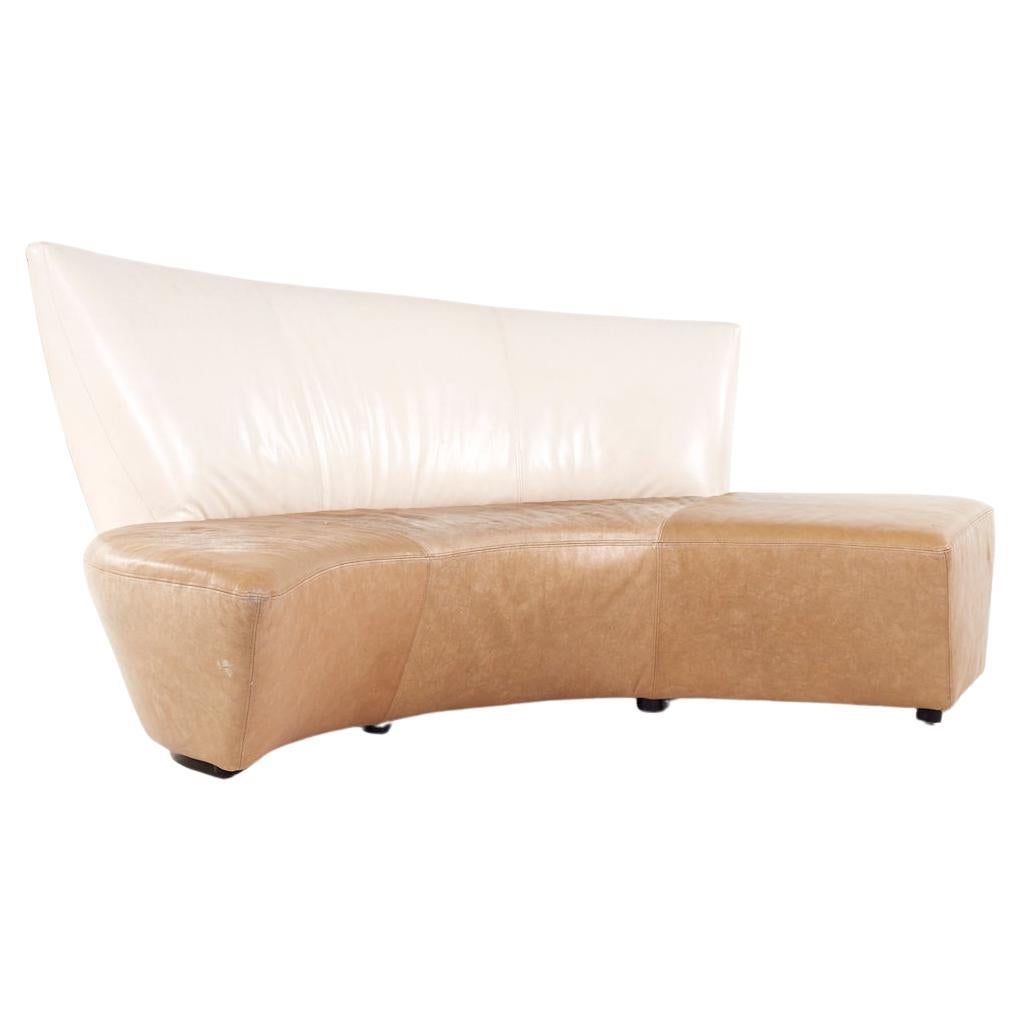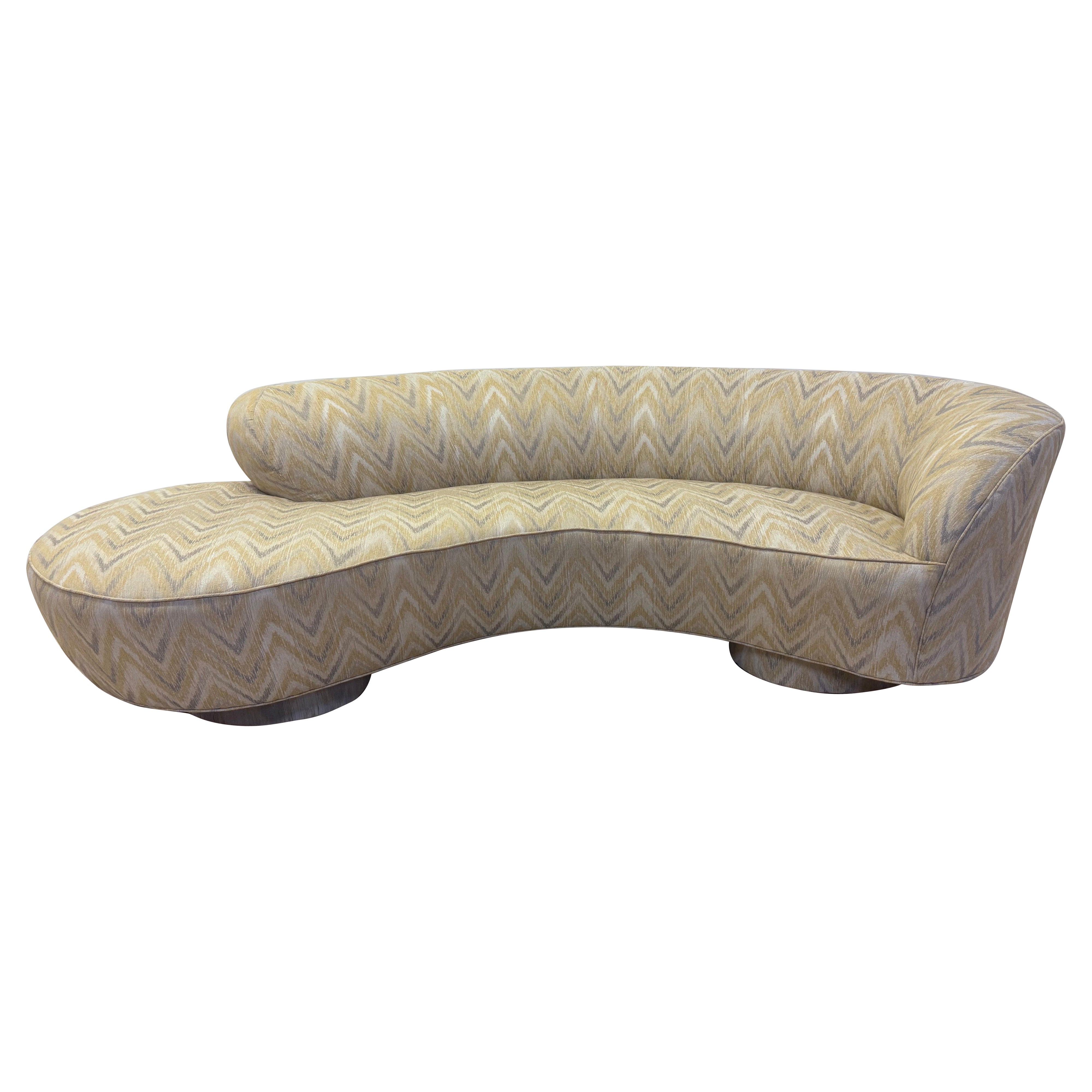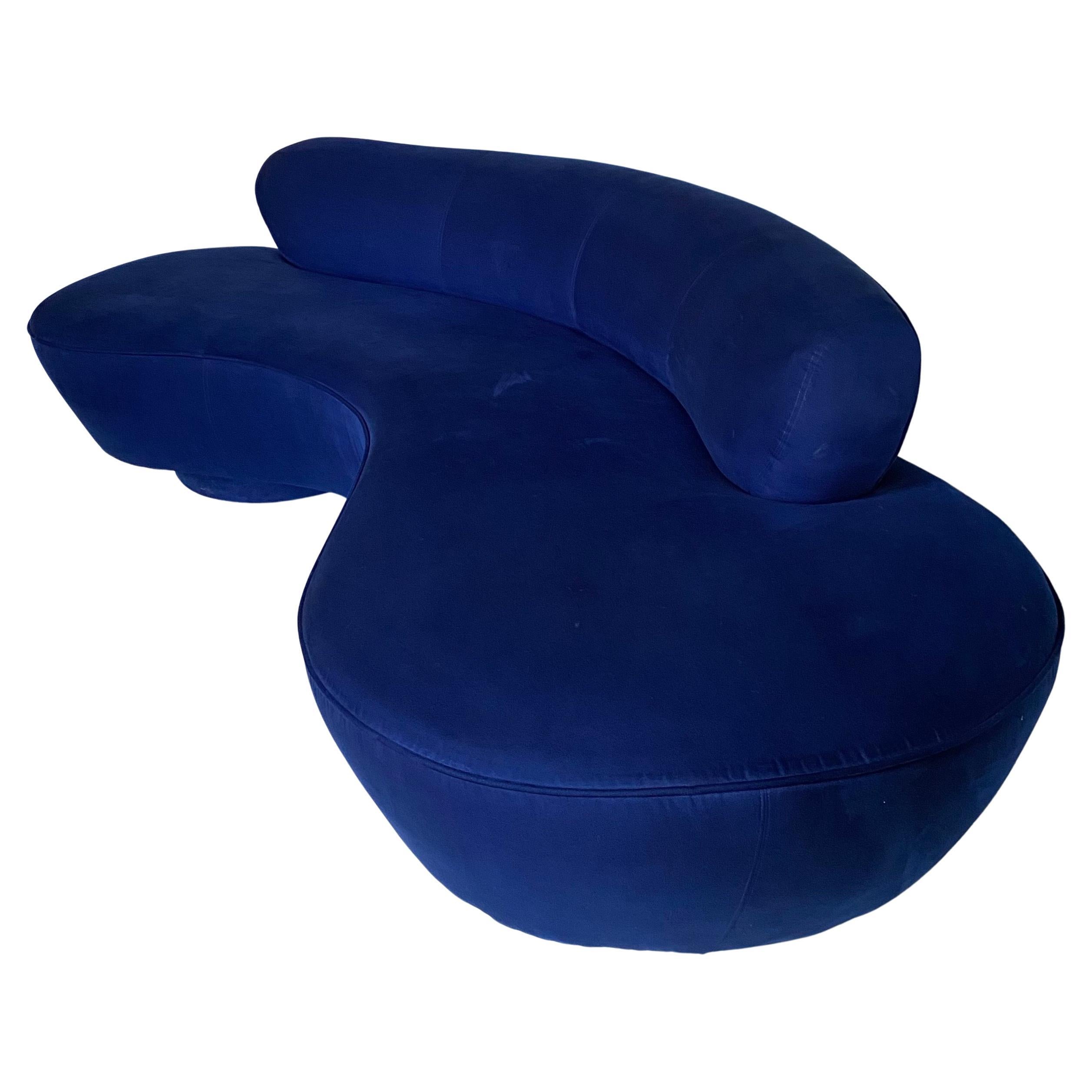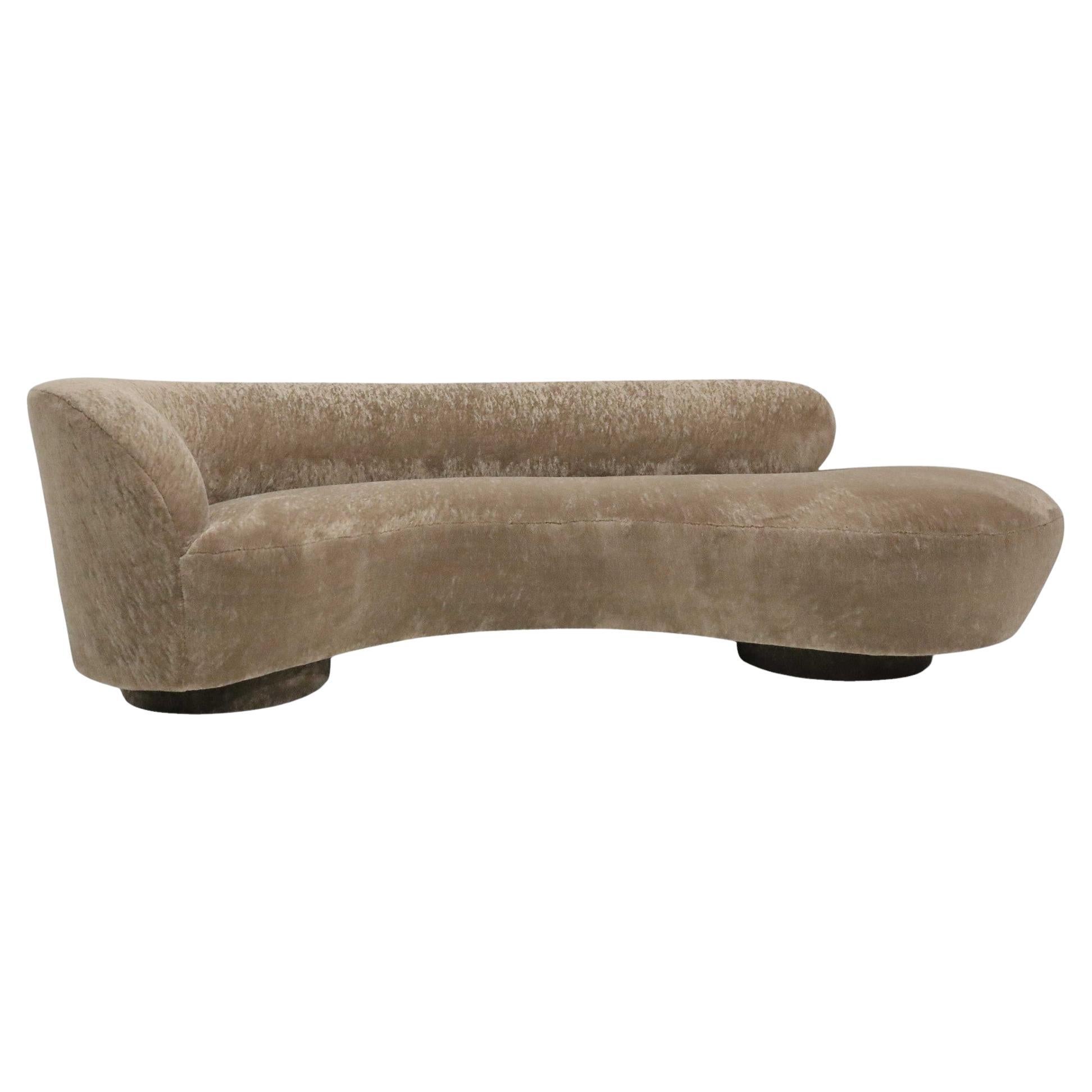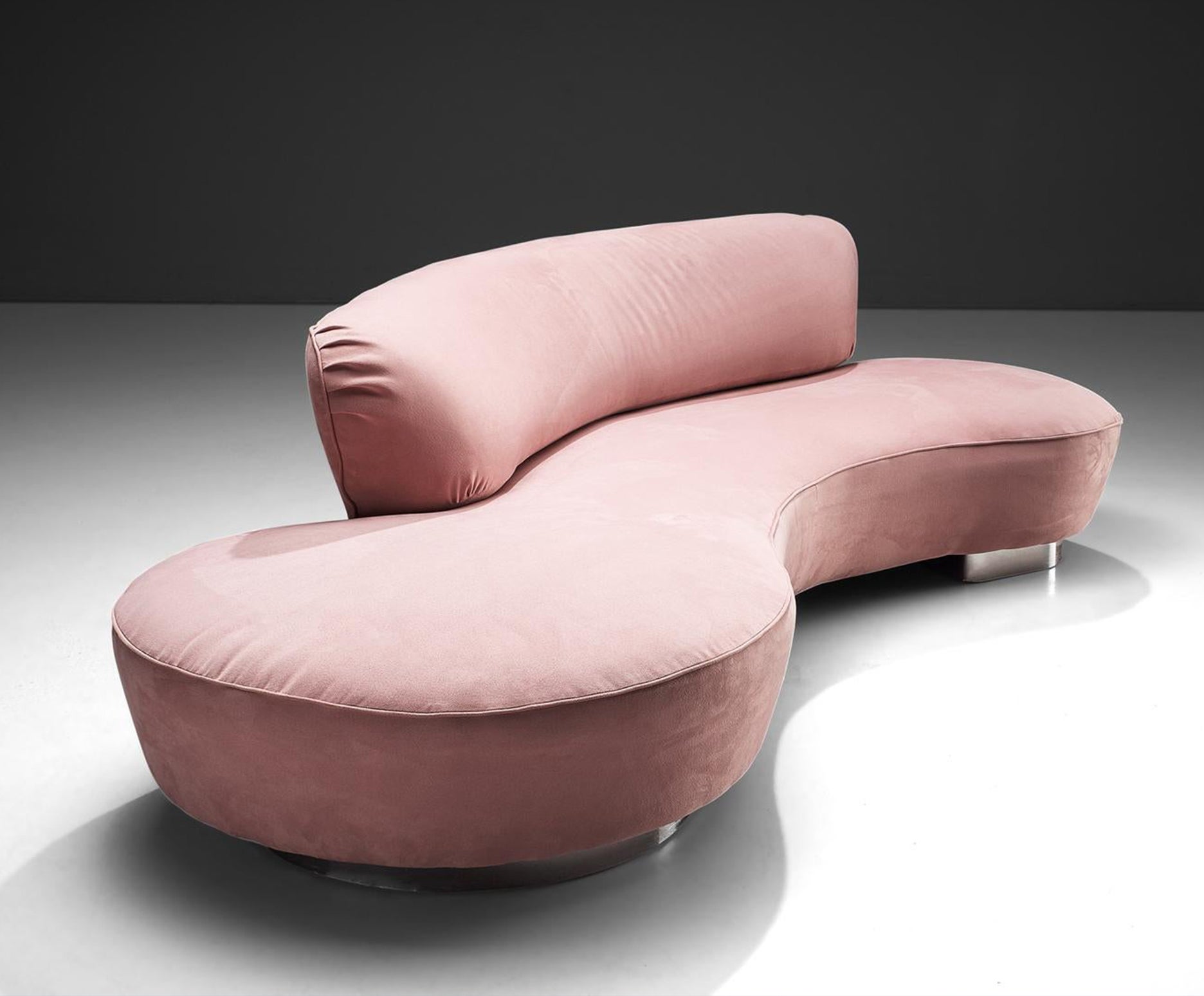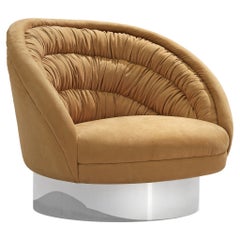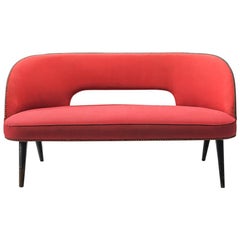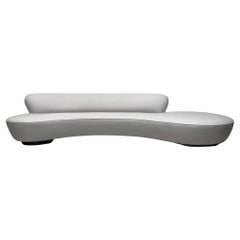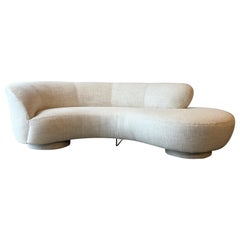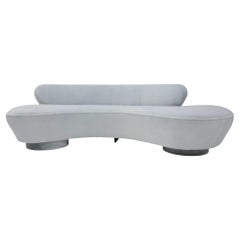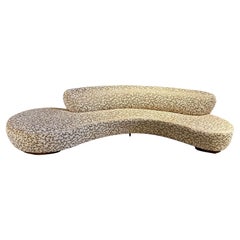Iconic Vladimir Kagan ‘Serpentine’ Sofa in White Upholstery
View Similar Items
Iconic Vladimir Kagan ‘Serpentine’ Sofa in White Upholstery
About the Item
- Creator:Vladimir Kagan (Designer)
- Design:
- Dimensions:Height: 31.7 in (80.5 cm)Width: 139.77 in (355 cm)Depth: 64.97 in (165 cm)Seat Height: 15.56 in (39.5 cm)
- Style:Mid-Century Modern (Of the Period)
- Materials and Techniques:
- Place of Origin:
- Period:
- Date of Manufacture:1950s
- Condition:Wear consistent with age and use. Every item Morentz offers is checked by our team of 30 craftsmen in our in-house workshop. Special restoration or reupholstery requests can be done. We guarantee a very high-quality standard, ask our design specialists for detailed information.
- Seller Location:Waalwijk, NL
- Reference Number:Seller: 501111321stDibs: LU933126762912
Serpentine Sofa
The voluptuous contours of Vladimir Kagan's (1927–2016) 1950 Serpentine sofa were designed to bring people together.
The S-shaped piece provided both flexible group seating on an armless form as well as a focal point for mid-century entertaining. Unlike most sofas, this one was not designed to be pushed against a wall. Also, people were not supposed to sit on the Serpentine in a row. Rather, the sofa presided over the center of the room as a swoosh of plush seating. The original design included casters so it could easily be maneuvered around for a party or to provide a better view of new art on the walls.
Born in Germany, Kagan’s interest in furniture began with his father, a Russian master cabinetmaker. Following the rise of the Nazis, a young Kagan immigrated to the United States in 1938 and shortly thereafter enrolled as an architecture student at Columbia University. Nearly 15 years later, Kagan opened his first furniture company. His concept of modern living was featured in the furniture designs at the Monsanto House of the Future, which was on view at Disneyland from 1957 to 1967.
Upholstered in inviting materials, such as seductively hued velvet and Alcantara, Kagan’s furniture demonstrated how modernism could be beguiling even while breaking with the rigid norms of the past. Reflecting the biomorphic shapes in art and sculpture that such creators as Isamu Noguchi promoted as well as celebrating Scandinavian design, each piece was made for both comfort and form in its organic shape.
Vladimir Kagan
The pioneers of modern furniture design in America in the mid-20th century all had their moments of flamboyance: Charles and Ray Eames produced the startling, biomorphic La Chaise; George Nelson’s firm created the Marshmallow sofa; Edward Wormley had his decadent Listen to Me chaise. But no designer of the day steadily offered works with more verve and dynamism than Vladimir Kagan. While others, it seems, designed with suburban households in mind, Kagan aimed to suit the tastes of young, sophisticated city-dwellers. With signature designs that feature sleekly curved frames and others that have dramatic out-thrust legs, Kagan made furniture sexy.
Kagan’s father was a Russian master cabinetmaker who took his family first to Germany (where Vladimir was born) and then to New York in 1938. After studying architecture at Columbia University, Kagan opened a design firm at age 22 and immediately made a splash with his long, low and sinuous Serpentine sofa. Furniture lines such as the Tri-symmetric group of glass-topped, three-legged tables and the vivacious Contours chairs soon followed.
Kagan’s choices of form and materials evolved through subsequent decades, embracing lucite, aluminum and burl-wood veneers. By the late 1960s, Kagan was designing austere, asymmetrical cabinets and his Omnibus group of modular sofas and chairs. For all his aesthetic élan, Kagan said that throughout his career, his touchstone was comfort. “A lot of modern furniture was not comfortable. And so comfort is: form follows function. The function was to make it comfortable,” he once commented. “I created what I called vessels for the human body.”
A diverse group of bodies have made themselves at home with Kagan designs. Among the famous names who commissioned and collected his designs are Marilyn Monroe, Gary Cooper, Andy Warhol, David Lynch, Angelina Jolie and Brad Pitt, and firms such as Gucci and Giorgio Armani. His work is in numerous museum collections, including those of the Victoria & Albert and the Metropolitan Museum of Art.
Because of its idiosyncrasy, Kagan’s work did not lend itself to mass-production. Kagan never signed on with any of the major furniture-making corporations, and examples of his designs are relatively rare. As you will see from the offerings on 1stDibs, even decades after their conception, Kagan pieces still command the eye, with their freshness, energy, sensuality and wit.

Established in 2006, Morentz has a team of approximately 55 restorers, upholsterers, interior advisers and art historians, making it a gallery, workshop and upholstery studio, all in one. Every day, a carefully selected array of 20th-century furniture arrives from all over the world at the firm’s warehouse, where the team thoroughly examines each piece to determine what, if any, work needs to be done. Whether that means new upholstery or a complete restoration, Morentz's aim is always to honor the designer’s intention while fulfilling the wishes of the client. The team is up to any challenge, from restoring a single piece to its original glory to furnishing a large-scale hotel project.
More From This Seller
View AllVintage 1950s American Mid-Century Modern Sofas
Metal, Chrome
Vintage 1950s American Mid-Century Modern Sofas
Fabric, Walnut
Vintage 1970s American Post-Modern Lounge Chairs
Aluminum, Chrome
Vintage 1960s Italian Mid-Century Modern Sofas
Metal
Vintage 1970s Italian Mid-Century Modern Sofas
Brass
Vintage 1960s French Mid-Century Modern Sofas
Fabric, Oak
You May Also Like
Vintage 1950s Sofas
Fabric
1990s Mid-Century Modern Sofas
Upholstery
20th Century American Mid-Century Modern Sofas
Lucite, Mohair
Early 2000s North American Mid-Century Modern Sofas
Upholstery, Walnut
1990s American Mid-Century Modern Sofas
Chrome
1990s American Modern Sofas
Fabric
Recently Viewed
View AllRead More
A Short History of the World’s Most Iconic Designs
Of the million-plus items on 1stdibs, some seem to have transcended time, looking as fresh today as when they were first produced. The pieces highlighted on our new Iconic Designs page stand out for longevity, functionality and quality of design and manufacture — just the tonic for the present unsettled moment.
This Paavo Tynell Chandelier Is a Radiant Bouquet
The alluring pendant light exemplifies the designer’s winsome mid-career work.
